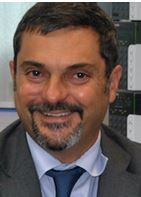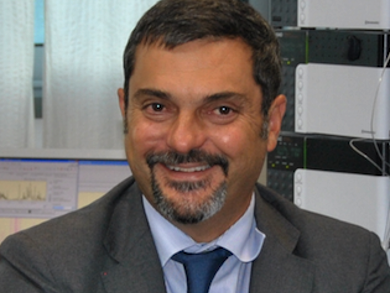High performance liquid chromatography (HPLC) has proven its potential in separation science as a reliable and heavily used technique, with superior performance and wide applicability in many different fields. Over the years, HPLC has become a well-established separation technology that is continuously evolving to face the challenges posed by research and industry, as well as regulatory agencies, and to meet the even more stringent requirements for qualitative and quantitative analysis, in terms of speed, accuracy, and sensitivity.
Personal Experience
My first research article based on HPLC dates back to 1993 [1]. It was focused on the evaluation of the genuineness of citrus essential oils. The composition of coumarins and psoralens in bergamot, as potential markers of origin/authenticity/adulteration, was analyzed by normal phase LC. The equipment used was a Waters Associates liquid chromatograph (consisting of a 519 pump, gradient controller 600E, U6K manual injector, and a spectrophotometric detector model 484), and the separation was achieved on a 10-micrometer particle column, which was a workhorse in analytical laboratories at that time [1].
If I have to think about one of the most exciting times, one experiment comes to my mind: It was more than twenty years ago, and my group was making its first steps into the fascinating world of two-dimensional “comprehensive” LC techniques. We did the first online couplings of normal phase and reversed phase LC. These are still today among the most orthogonal separation modes. At that time, direct hyphenation had been hampered by immiscibility issues and scarce analyte focusing. I remember it almost as a kind of “serendipity”, the idea to use a microbore column (with 1.0 mm inside diameter) in the first dimension, operated at 20 µL min–1, to minimize the amount of incompatible solvent transferred to the secondary octadecylsilica column, and at the same time achieve good peak focusing for each fraction [2].
Most Challenging
I have always liked the motto “Who dares wins”, and I am pretty convinced of the fact that anyone who is satisfied with the average will never embark on the adventure of a life of commitment, and will also prevent himself from great accomplishments and exceptional rewards. As a consequence, it often happens that I undertake projects that may prove exceedingly difficult.
In the last decade, and within the framework of a scientific collaboration with Shimadzu Company, we implemented two instrumental prototypes, one consisting of two-dimensional comprehensive LC directly hyphenated to an iron trap time-of-flight (IT-ToF) mass spectrometer, and the other one coupled to triple quadrupole mass spectrometry (MS) detection. I am very proud of the fact that both of these instruments are currently marketed.
Very recently, we developed a hybrid instrumentation consisting of the coupling of supercritical fluid chromatography to ultra-high-pressure LC, with ToF MS/MS and ion mobility (IMS) detection, all based on Waters equipment. In such a system, the first LC step is conveniently replaced by greener and faster supercritical fluid chromatography (SFC), also capable of additional selectivity, while detection can be performed either by using evaporative light-scattering detectors (ELSDs), photodiode arrays (PDAs), or additional separation dimensions can be gained by IMS even in the tandem MS mode.
Apart from instrumentation, a significant part of our research has focused on the use and evaluation of the solid core particles introduced by Millipore Sigma – as part of a long-term and fruitful collaboration – as well as on the totally porous, monodisperse silica particles. We have been exploiting their performance both in monodimensional and multidimensional applications, as they have really introduced a breakthrough in column technology and particle engineering.
Future Trends
Downscaling or miniaturization of analytical platforms is a major trend in HPLC and in separation science in general. The advantage of this is that it reduces solvent and sample consumption and, eventually, costs, while at the same time reducing the environmental impact. It is foreseeable that both instrumental and column technology will continue to develop into the micro- and nanoscale region, spurred on by the requirements of life science applications, for example, in lipidomics or proteomics.
Since HPLC resolution is dominated by the selectivity of the separation materials, aside from efficiency, a key factor will be the design and synthesis of tailored stationary phases, through the choice of adequate porous materials, improved bonding and surface chemistry.
It is predictable that column manufacturers will respond with efforts directed towards improved batch-to-batch and column-to-column reproducibility, and extended column lifetime, for general purposes, as well as biocompatible columns for enhanced selectivity and higher recovery for bioanalytical separations. Given the recent, overwhelming growth of LC–MS based applications in all fields, it is predictable that the chromatographic scenario will continue drifting toward the exploitation of the latest achievements in MS technology, including analyzers, ionization techniques, and detectors.
References
[1] Luigi Mondello, Ildefonsa Stagno d’Alcontres, Rosa Del Duce, Francesco Crispo, On the genuineness of citrus essential oils. Part XL. The composition of the coumarins and psoralens of Calabrian bergamot essential oil (Citrus bergamia Risso),. Flav. Fragr. J. 1993, 8(1), 17–24. DOI: 10.1002/ffj.2730080105
[2] Paola Dugo, Olinda Favoino, Rosario Luppino, Giovanni Dugo, Luigi Mondello, Comprehensive Two-Dimensional Normal-Phase (Adsorption)−Reversed-Phase Liquid Chromatography, Anal. Chem. 2004, 76(9), 2525–2530. DOI: 10.1021/ac0352981

Luigi Mondello is co-president and co-founder of The Mediterranean Separation Science Foundation Training and Research Center (CHROMALEONT); Editor of several journals including the Journal of Essential Oil Research, Journal of Quality Assurance and Pharma Analysis: and Journal of Separation Science, and is co-editor of the book Multidimensional Chromatography.
- HPLC Celebrates 50 Years overview page




